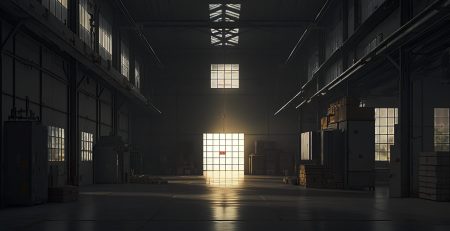Key Factors to Consider When Selecting Robots
Robots have emerged as indispensable assets, revolutionizing industries with their unparalleled capabilities.
The International Federation of Robotics (IFR) reported that there are 3.5 million operational robots across the globe as of February 2023.
While the use of robotics and automation is growing rapidly, selecting the right robot for a specific industrial application is a complex task. It requires careful consideration of various factors beyond the basic technical specifications.
Levels of autonomy, perception and sensing, decision-making and planning, and learning and adaptation capabilities are some of the critical elements organizations must assess.
These factors are particularly relevant for advanced industrial applications where robots need to operate in dynamic environments, handle complex tasks, and interact intelligently with their surroundings.
Let’s understand the role of each of these factors to help you make the right choice when it comes to selecting the robot for your specific industrial use case.
Levels of Autonomy
There are various levels of robot autonomy (LORA), ranging from teleoperated robots to fully autonomous ones. It also greatly influences the way humans and robots interact with each other.
There are no universal benchmarks for measuring and defining autonomy levels in robotic automation. But based on certain factors, roboticists have proposed certain levels of robotic automation. These factors include self-maintenance, sensing the surroundings, and performing tasks.
These factors put robot autonomy on a scale from low to high. That means low robot autonomy makes a robot heavily dependent on human guidance.
On the other hand, high robot autonomy means that a robot can make decisions and act on its own by adapting to various environments with little to no human intervention.
Determining the appropriate autonomy level depends on the complexity of the tasks and the need for human intervention. Tasks involving repetitive motions and well-defined processes may benefit from higher levels of autonomy, while complex or safety-critical tasks may require human supervision.
Perception and Sensing
Robots perceive and sense their functioning and surroundings, including objects, humans, and other robots, using sensors and other cutting-edge technologies.
These technologies include computer vision, Light Detection and Ranging (LiDAR), radar, ultrasonic sensors, Inertial Measurement Units (IMUs), microphones, speech recognition, and global positioning systems (GPS). These technologies also enable robots to collect and process data about their working environment.
The data collected from these technological devices is processed using advanced machine learning (ML) algorithms to enable the robot to make decisions and take appropriate actions.
Therefore, when choosing a robotics system, consider the specific sensing requirements of the application to ensure the robot can handle the necessary tasks with precision and reliability.
Decision-Making and Planning
Decision-making and planning are critical elements of robot autonomy, as they help the robots meet their objectives and adapt to ever-changing surroundings. Different levels of robot autonomy demand different levels of decision-making and planning for robots.
For example, the decision-making and planning of a teleoperated robot would be based on the decisions and plans of a human operator. But on the other hand, a fully autonomous robot may make decisions and devise plans using ML algorithms without the help of humans.
Decision-making and planning by robots range from motion and path planning to coverage and taking actions to understand their environment better.
Learning and Adaptation
The learning and adaptation capabilities of robots are equally important to consider in the robot autonomy spectrum because both variables influence their performance.
Not every robot is intelligent, but autonomous robots demonstrate higher levels of intelligence to carry out complex tasks.
Robotic intelligence may manifest as sensor processing, reflex behavior, cognitive functions, or special purpose programs. The higher the level of robot autonomy, the more sophisticated these components would be.
In the future, it is expected that most autonomous robots will be equipped with greater learning and adaptation capabilities so that they can quickly react and adapt to dynamic environments.
Sensors are the Key
It is evident that autonomous robots improve the efficiency and productivity of an industrial unit. They help reduce human errors and risks in hazardous working conditions, enhancing worker safety. You can also automate repetitive tasks using autonomous robots.
A greater part of all these benefits of autonomous robots can be attributed to advanced sensor technology. Sensors detect the changes in the robot’s surroundings and send the information to its controller. The processing of this sensory data allows autonomous robots to adapt to their evolving surroundings and perform complex tasks.
If you are looking to turn your industrial facility into a safer, more efficient workplace using robots, sensors will play a key role.
Hokuyo is a leading manufacturer of smart sensors for robotics and autonomous systems. Whether you need LiDAR or safety laser scanners, Hokuyo has the right sensor solution for you.
Contact us to learn how we can help you achieve your robotic automation goals.

